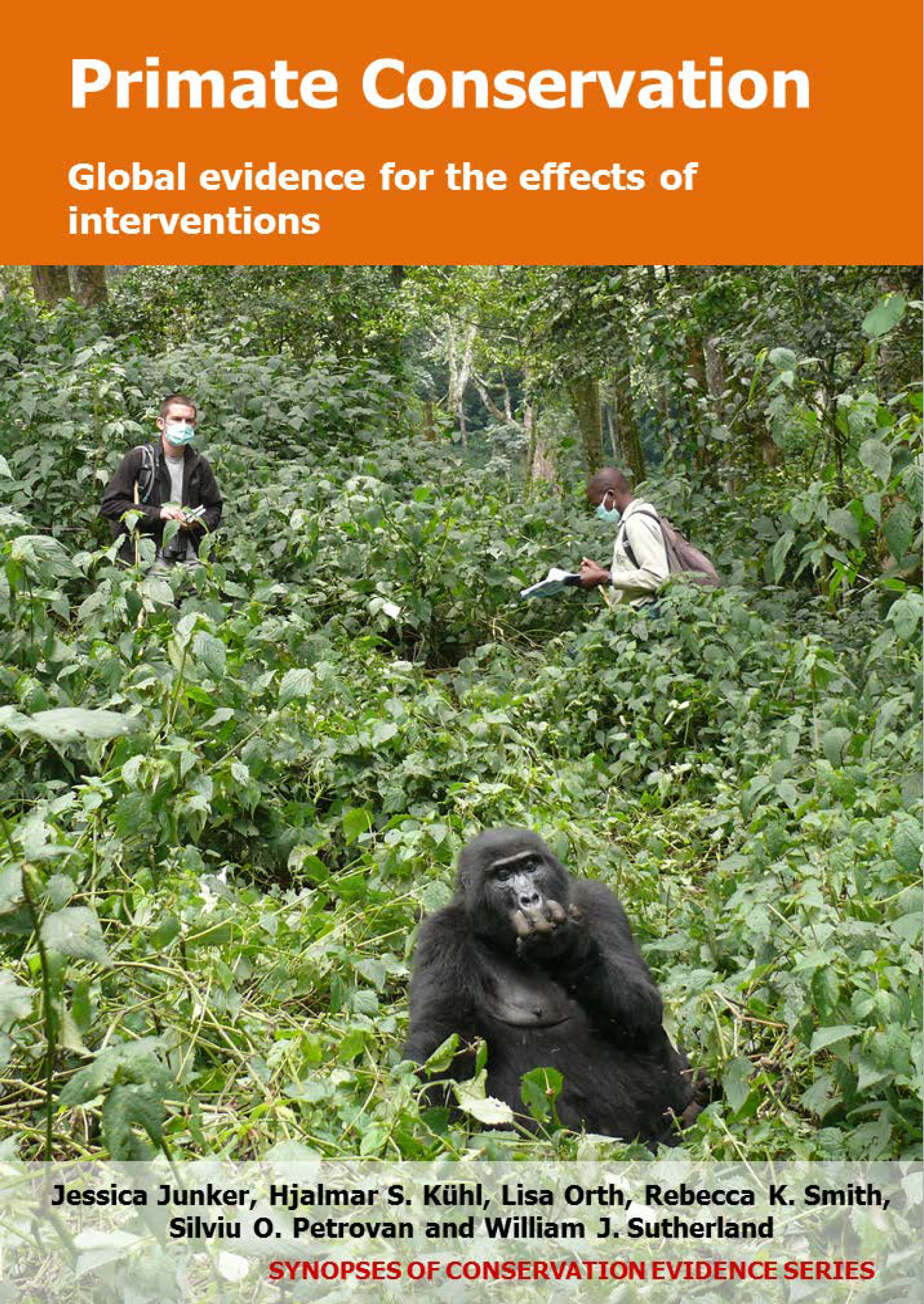Provide additional sleeping platforms/nesting sites for primates
-
Overall effectiveness category Unknown effectiveness (limited evidence)
-
Number of studies: 3
View assessment score
Hide assessment score
How is the evidence assessed?
-
Effectiveness
20% -
Certainty
0% -
Harms
0%
Study locations
Supporting evidence from individual studies
A before-and-after trial in 1954-1985 in degraded rainforest in Poço das Antas Reserve, Brazil found that a translocated captive-born golden lion tamarin Leontopithecus rosalia population provided with artificial nestboxes, decreased by more than half (57%) within the first year post-release. No statistical tests were carried out to determine whether this decrease was significant. Of the 14 individuals released, seven died and two were removed. One female died from hypothermia, because her nestbox was occupied by another individual. Three infants were born, one of which died due to illness. Eight individuals were released as a family group and six were released as pairs one month later. Nesting boxes were hollow logs that individuals were accustomed to during training. Tamarins spent an unknown amount of time in 15 x 4.5 x 3 m outside enclosures to acclimatize. They were habituated to humans and fostered to facilitate survival post-release. The reserve harboured natural predators. Sick or injured tamarins were captured and treated. Reintroduced tamarins were supplied with food for ten months after their release. The study does not distinguish between the effects of the different interventions mentioned above.
Study and other actions testedA before-and-after trial in 1984-1991 in coastal forest in Poço das Antas Reserve, Brazil found that the majority of reintroduced golden lion tamarins Leontopithecus rosalia that were provided with a nestbox alongside 14 other interventions, did not survive over a study period of seven years. Fifty-eight (64%) out of 91 reintroduced tamarins did not survive post-release. However, 57 infants were born (reproductive rate=63%) during the study period, of which 38 (67%) survived. Nestboxes were modified plastic picnic coolers and were initially provided to groups during quarantine, and/or in the acclimatization cages and/or post-release. Captive-bred or orphaned tamarins were introduced in different years into habitat with resident tamarins and predators. Groups were provided with supplementary food and water, and allowed to adapt to local habitat conditions before release. Tamarins were quarantined, underwent veterinary checks and were treated for parasites before release. Sick or injured animals were rescued, treated and re-released. The reserve became officially protected in 1983. The study does not distinguish between the effects of the different interventions mentioned above.
Study and other actions testedA before-and-after trial in 2008-2010 in a tropical forest-grassland mosaic at Batéké Plateau National Park, Gabon found that the majority of reintroduced western lowland gorillas Gorilla gorilla gorilla that were provided with nesting platforms along with ten other interventions, survived for at least nine months. Four (80%) out of five juvenile gorillas survived for at least nine months after release. They spent the night in an enclosure equipped with nesting platforms and nesting material (Aframomum sp.). Gorillas were supplemented with additional food and water. Three captive-bred and two orphaned wild-born individuals were reintroduced as a group into habitat with predators and without resident gorillas after they were allowed to adapt to local habitat conditions for some time. Gorillas were dewormed regularly. Caretakers guided them into different forest patches on a daily basis. The study does not distinguish between the effects of the different interventions mentioned above.
Study and other actions tested
Where has this evidence come from?
List of journals searched by synopsis
All the journals searched for all synopses
This Action forms part of the Action Synopsis:
Primate Conservation
Primate Conservation - Published 2017
Primate Synopsis





)_2023.JPG)














